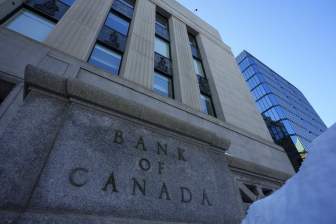TORONTO – Auditor general Bonnie Lysyk says electricity customers in Ontario have paid billions of dollars for the Liberal government’s decisions to ignore its own planning process for new power generation projects.

The Ontario Power Authority’s 20-year technical plan, which was updated every three years and reviewed by the Ontario Energy Board, would have offered protection to consumers, said Lysyk.
“Instead of following the legislated process, the Ministry of Energy itself effectively assumed responsibility for electricity planning,” she said.
The ministry issued policy plans and 93 directives that the auditor said “did not fully consider the state of the electricity market, did not take long-term effects fully into account,” and sometimes went against the OPA’s advice.
“Ontario electricity ratepayers have had to pay billions for these decisions,” she said.
The electricity portion of hydro bills for homes and small businesses rose 70 per cent between 2006 and 2014, which Lysyk said cost consumers $37 billion dollars in so-called Global Adjustment payments to generators – and will cost ratepayers another $133 billion by 2032.
The auditor found the Green Energy Act is also driving up rates. Hydro customers will pay a total of $9.2 billion more for wind and solar projects under the Liberals’ 20-year guaranteed-price program for renewable energy than they would have paid under the old program.

Get daily National news
Ontario’s guaranteed prices for wind power generators are double the U.S. average, while the province’s solar power rates are three-and-a-half times higher.
The auditor said the lack of a co-ordinated planning process resulted in additional cost of $408 million to pay generators for the increased power they produced, or for not producing power at the request of the system operator.
Ontario’s average annual electricity surplus between 2009 and 2014 was equal to the total power generation capacity of Manitoba, and in the next five years its base load generation will exceed Ontario’s demand by an amount equal to Nova Scotia’s power needs for five years.
In her report, the auditor general said the reliability of Hydro One, which owns the province’s transmission grid and also serves as a local distribution company for 1.3 million customers in rural and northern Ontario, has “worsened considerably.” Its distribution system was consistently one of the least reliable in Canada, said Lysyk.
“There is a risk of more power failures because Hydro One is not replacing transmission assets that have exceeded their planned useful service life,” she said.
The auditor’s report is also critical of the way the Liberals hand out taxpayers’ money.
Lysyk found 80 per cent of $1.45 billion in funding from the Ministry of Economic Development and Employment went to companies the Liberals invited to apply, but they couldn’t provide criteria they used to select firms or say if they created jobs.
Nine other ministries gave out another $1.8 billion in funding for similar projects, but the auditor found there is no co-ordination of the government spending, and there was no follow-up to see if the jobs created or retained still existed after the funding ended.
The Ministry of Finance provides over $1.3 billion in corporate income-tax credits targeted to economic development and jobs each year, but the Ministry of Economic Development “rarely considers these when determining which businesses to provide grants and loans to.”
The Ministry of Research and Innovation does not track the total amount of money invested by the government in research and development, nor does it evaluate the impact of research funded by the province, which gave universities $1.9 billion over the past five years.
The auditor also takes the Liberals to task for poor oversight and inconsistent service levels at Community Care Access Centres and Local Health Integration Networks, and for not responding quickly enough to reports of critical incidents at the Ontario’s 630 long-term care homes, which get $3.6 billion a year in provincial funding.
She also wants more specifics on how they plan to lower the province’s debt-to-GDP ratio to 27 per cent from the 39.5 per cent reported in March, and warns net debt of $284.5 billion will soar to $319.5 billion by 2017-18, which is when the Liberals have promised to eliminate the deficit.






Comments